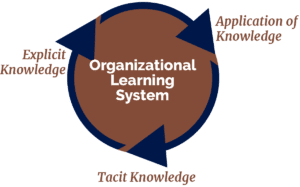Fixing Performance Management
When you hear the term performance management – how do you feel? As a manager/executive, this concept tends to bring extra work that most people do not have time for at the end of each fiscal calendar; procrastination is common. As an employee, it tends to stir up extra anxiety since it directly has an influence over one’s renumeration for the next year. Regardless of the role you have in an organization, the negative connotations are common. From an organizational perspective, performance management is rarely effective in consistently enhancing the desired performance improvements. The combination of the negative connotations and the lack of effectiveness at the organizational level makes anyone wonder, why do we use it at all?
The answer tends to be limited to a few responses, regardless of industry, location, and size. Most executives don’t see an effective alternative, or they don’t have the time/resources to fix what is needed. Having worked with countless executives and HR managers from around the world, the frustrations voiced are similar. This is driven by two major influences from management principles. The first major influence is the latent metrics. Typical metrics tend to measure outcomes after specified time. If a metric at the end of the year looks great, they have no idea which specific set of behaviours drove that success. If a metric shows poor performance, employees still have no idea how to fix it. For clever employees, studies show increases in performance for them just a month or two before the review time to maximize their rewards. These individuals learn to play the game to get the raise, but then their performance reverts back to normal. The second major influence is the frequency of measurement that minimizes chances for development. When the performance evaluations are done once a year or even twice a year, people have already developed habits in their daily tasks. Even highly motivated employees need direction for development. The responsibility to provide effective direction is left to the leadership abilities of individual managers, which also is not systematically developed in the organization.
Based on these major factors, the results of performance management are abysmal. Executives and managers desire a workplace where performance increases along with innovation. Let’s explore some ways to improve your system. Start with visualizing a new learning structure that drives the right thought process to yield desired behaviors. In time, the learning structure leads to the desired performance targets. This addresses a fundamental flaw, which is that outcomes cannot be measured without learning from the mixture of key behaviors that drive performance.

- You start with exploring tacit knowledge, which challenges leaders to discover what their employees know. This includes their greatest frustrations at work, their innovations, and other aspects of their knowledge.
- You then take the tacit knowledge and make it explicit by synthesizing the individual knowledge into group knowledge. This provides the foundation of what’s needed in developing employees. Combined with organizational goals for skills development, explicit knowledge creates the learning contents.
- New information is then shared through standard mediums of learning such as workshops, articles, meetings. Keep in mind – this is far from learning. It is only the introduction of new information.
- Next is the scheduled application of new learning, which should occur within a week of new information. This is where an accountability structure must create the expectation and build the courage within the individuals to apply. This calls for a safe experimental environment.
- The final stage is the measurement of outcomes. This is the key design that takes performance management into a different dimension. The measurement will occur with the activities of learning, as well as with outcomes resulting from application.
This process is the organizational process for continued success in performance. Some organizational cultural elements also must be in place, such as weekly learning meetings. In such meetings, leaders inquire of personnel what they have learned/innovated/overcome in the past week.

